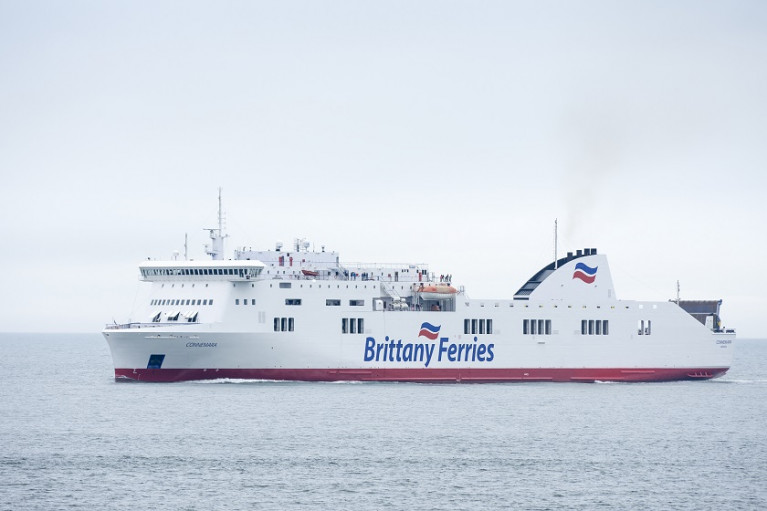Operator Brittany Ferries says it may have been a season to forget passenger traffic but that freight demand has been kept rolling throughout the year.
The ferry company which serves France, Spain, Ireland and the UK had a steady 2020 and is looking forward to 2021, with positive signs from the marketplace.
Several major customers according to the Breton based operator have indicated their intention to increase business next year. This could amount to an additional 15% of freight traffic on routes connecting the UK with Spain and 15% on its Ireland to Spain link (Rosslare-Bilbao). In total the company carries around 210,000 units across its 12-route network each year.
“The Brittany Ferries freight team has worked tirelessly throughout the Covid-19 crisis to guarantee the supply of essential products like food and medicine,” said Simon Wagstaff, group freight director for the company. “It’s an important part of our portfolio because freight comprises around a quarter of the company’s annual turnover and our customers rely on us to maintain essential cross-border links. Based on the reaction of the marketplace - and the support of our loyal freight customers – we are looking forward to a positive 2021.”
A new direct route connecting Ireland with Spain was launched for the first time in 2018, originally operating from Cork to Santander, however this operation moved to Rosslare-Bilbao earlier this year in response to demand from freight customers. That decision has borne fruit and demand is expected to continue to grow as more companies in Ireland and the Iberian peninsula look for a Brexit by-pass to escape the UK land-bridge.
Cork meanwhile continues to serve passenger traffic, with the company’s flagship cruise ferry Pont-Aven returning in 2021 for the holiday season. The service has now connected with company headquarters in Roscoff, Brittany for more than 40 years.
More positive news for freight concerns routes connecting the UK with Spain. The company’s newest vessel, Galicia will enter service in December with a vast garage hosting more than 3km of lanes, accommodating up to 155 trailers.
In addition to serving UK to Spain, Galicia will make one weekly rotation between Portsmouth and Cherbourg. Of course, this cross-channel service will be just one of many to serve the freight market next year, the most popular being its Caen-Portsmouth workhorse - a route which carries nearly 50% of all freight traffic for the company.


























































